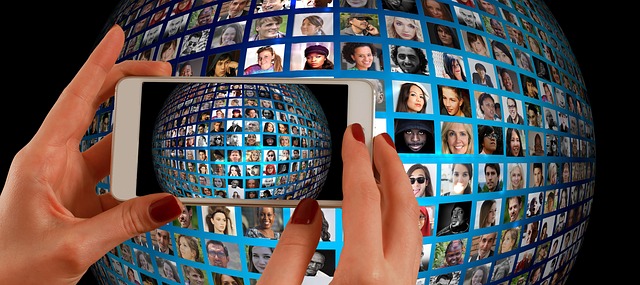Millennia ago, the Ancient Greek philosopher Democritus speculated on the most basic building block of life: the atom. The atom, he surmised, was what resulted when one reduced everything down to its simplest form. Adopting that mentality towards our modern-day internet, one could argue that social media boils down into the meme: an easily shareable image, sometimes paired with text, that is the fastest-spreading form of currency on the web. The meme is snarky, the meme is clever, and most importantly, the meme is visual.
Once, the Internet, and operating systems themselves, were all text-based. But as computers have gotten progressively better at displaying visual content, so too has our interdependence with them thickened. It all makes sense—humans, at the end of the day, are visual creatures. There’s a reason why images spread faster than, say, 10,000 word essays. Our brains are wired for it. We can decode visual data in 13 milliseconds, 60,000 times faster than text. Dilbert creator Scott Adams generated enormous amounts of controversy this election cycle by claiming because Donald Trump spoke in easy-to-understand, visual language that penetrated straight to the brain, he was able to be a better persuader than all his electoral rivals.
As technology tumbles further down the sci-fi rabbit hole in the year 2017, one can expect that visual content, supplemented by new technologies, will become even more prevalent. Here are 3 reasons why visuals—videos, images, VR and the like—will be the predominant form of content we interact with in the next decade.
Visuals are proven to engage
Social media has been around long enough for researchers to start doing scientific studies on what works. And what they’ve found is that visuals engage. Deeply. Social media experts constantly emphasize the importance of including photos with posts— Facebook posts with photos get the highest engagement rate, 37%, versus text-based posts at 27%. The phenomenon extends well beyond social media and into journalism and other fields—one study found that articles with images get 94% more total views.
Attention spans are decreasing
Humans, a study by Microsoft claims, now have a shorter attention span than goldfish. Since the year 2000, our attention spans have decreased from twelve seconds, to nine seconds (on par with goldfish), to now eight seconds. There’s a reason video-sharing app Vine was so popular—it was extraordinarily visual, and its six-second limit fit neatly within the parameters of our attention spans.
Young people read less, but the sure watch a lot of videos. As we spend more and more time on our screens, it only makes sense that marketers and content creators will focus on wringing the most impact out of visual content, which, unlike text, can still grab ahold of our brain (as long as it’s compact enough).
New, exciting technologies are being developed
Every day, a bevy of enthralling new technologies are being created. In the next year, watch as live-streaming video, through Periscope or Facebook Live, becomes even bigger, particularly among brands and celebrities. Emojis—an example of micro-visual content—are now customizable and being used by artists and marketing campaigns worldwide. Snapchat, one of the most used apps in the world, has a powerful augmented reality engine that can turn one’s face into their best friend’s face, or into an animal’s face, or whatever else their designers dream up of. And immersive journalism—using virtual reality to insert oneself into the story, in a warzone or in a historical event—beckons.
It’s clear that visual content is not only becoming more common, but thriving in the digital ecosystem. Visual content is the future of the web, so expect even more innovation in its delivery this year.
Ellie Martin is co-founder of Startup Change group. Her works have been featured on Yahoo! , Wisebread, AOL, among others. She currently splits her time between her home office in New York and Israel.
